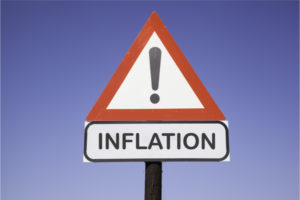The bond market is pricing in even more inflation. The Financial Times reports:
Market measures of future levels of inflation have climbed to a decade high this month, as investors digested company reports on how tangled supply chains, pent-up demand and rising energy prices were affecting their businesses.
The 10-year “break-even” inflation rate, derived from US inflation-protected government securities, rose to 2.62 per cent on Thursday, its highest level since September 2012 and above the Federal Reserve’s long-run inflation target of 2 per cent. The five-year break-even rate rose to 2.86 per cent on Thursday, the highest since March 2005.
Surging energy costs have propelled inflation measures higher in recent weeks, compounding pressures from supply chain disruptions that have hobbled companies seeking to deliver goods as economies recover from the coronavirus pandemic.
“It is certainly evidence that there is a lot more inflation on the horizon,” said Ian Lyngen, an analyst at BMO Capital Markets.
Corporate executives have been updating investors this month on the impact of rising prices on their businesses during the third quarter.
American Airlines management noted inflationary pressure in jet fuel prices and staff wages on its earnings call Thursday morning.
West Texas Intermediate, the US oil benchmark, notched its highest price in seven years this month. Energy costs are a large input into most market measures of inflation.
“These longer-term inflation expectations are suggesting that a rise in commodity prices may have a more durable impact on inflation,” said Subadra Rajappa, head of US rates strategy at Société Générale.
Read more here.

